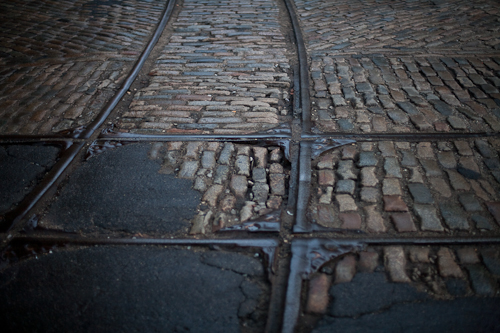Walking into 2009

In the desert outside what has become Yuma, Arizona, people made a picture of God. They etched it into the surface of that hard bright land -- hands, feet, mouth, body, thin lines stretching wide and long across the emptiness, until the emptiness was filled. And day by day throughout the year God lay on that dry flatness and watched the people come and go, to the river, to the fields, hunting, dancing, telling stories, singing. Stepping across the line of God's foot a father would say something quiet to his son to mark their passage, and the son would respond in kind to his father. Once each year the people would gather to walk the body of God together, tracing the worn path from head to torso to foot, and then back, on the other side, to the head again. As they walked, perhaps, they cleared brush and small stones from the etching, restoring a short section erased by the summer winds, or in another place, a part of God's arm that had been washed away by the winter rain. In this way they reconnected God to God, and themselves to each other.
In today's photography classrooms we sit back-to-back around the edges of dim rooms and make pictures without looking at each other. The disconnect is etched in concrete; it's in the architecture -- we can't turn to face each other because the computers are locked to desks anchored to the perimeter of the room.
But that's no problem, really, because digital picture-making is insubstantial, literally: without substance, of nothing, connected to nothing, bodiless. As we know from Batchen, Ritchin, Lipkin, and so many other contemporary writers, theorists, and critics, today's entire photographic enterprise is under siege by an onslaught of disembodied cyborgs; we are entering, full-speed, a post-photographic universe that is fundamentally intangible, disconnected and unreal, beyond touch. So, as machine operators, there isn't any requirement for haptic knowing or conversation -- just press the button, make a picture.
Amidst the hubbub, students arrive fresh from Facebook to find an environment that fits their expectations perfectly, further normalizing a turned-inward picture-making practice. Without experience of the kind of conversation where you find yourself saying something you didn't know you knew, their social networks, empty of both society and true connectivity, provide no foil against which to judge the paucity of these rooms.
So what? Why do I care? Because pictures make us human. Because making pictures is something humans do, have done, for thousands of generations, across all known cultures. Because, as a teacher of picture-making, I want to deepen the experience and broaden the possibilities of connection, of conversation. And because, at root, I disagree with this formulation of the digital tools, the digital environment, as being beyond the touch of the craftsperson. As ever, the hand makes the tools and the tools make the mind, which guides the hand; and in the feedback loop, the body makes the picture. I want to remember that process.
Today in Yuma it's more difficult to walk God. A highway cuts across his chest, a parking lot covers his foot. But the effort, I believe, continues.
In 2009, this blog -- I want to call it a journal -- is where some of these thoughts might approach a tentative resolution, or, I hope, start a conversation. I'm at a crossroads. Let's take a walk.
Comments